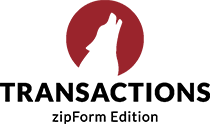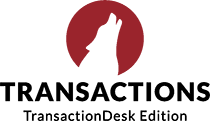
Just about any business owner can tell you the benefits of having a paper trail. Most consumers could, too. But having a paper trail doesn’t mean having paper.
In recent years, there’s been a huge shift in the real estate industry from the overflowing file cabinets of the past to digital file storage. It’s all about going paperless—leaving out the paper, but still keeping that proverbial paper trail.
Here’s the thing, though: Going paperless doesn’t necessarily translate to a smoother workflow. It’s a good foundation, but nowadays, there’s so much more we can do thanks to things like transaction management.
So what’s the big difference between a paperless office, and one that uses transaction management?
Let’s start by looking at what “paperless” means—and where it came from.
What does it mean to go paperless?
Today’s movement to go paperless is not a recent fad or even a new idea. It actually dates back to 1945, to an essay by Vannevar Bush, published in The Atlantic and titled “As We May Think.”
This essay, which was based on a 1939 piece from the same author, described a slew of then-unheard-of technology; from PCs, to a very basic version of the Internet, online encyclopedias, and more. It also went on to examine the paper-based workflows used by scientists to share and store documents, going so far as to call it “generations old and by now…totally inadequate for their purpose.”
That was 73 years ago—and it’s something we’re still working on.
Bush even went on to describe how we would store files in this theoretical office environment of the future:
“When data of any sort are placed in storage, they are filed alphabetically or numerically, and information is found (when it is) by tracing it down from subclass to subclass. It can be in only one place, unless duplicates are used.”
He imagined all this technology and storage (which sounds an awful lot like a Windows folder, doesn’t it?) as the answer to an enormous problem at the time: Scientists just didn’t have enough room in their brains—or their file cabinets—for all the information they needed to know.
Now take out “scientist,” and replace it with “brokerage.” How much of that sounds familiar?
Limitless paper in a paperless world
As much as many businesses are now adopting the idea of a paperless office (which was furthered from Bush’s ideas with a publicist effort in 1964), it remains a challenge.
It’s easy to see the environmental benefits, but on its own, going paperless doesn’t make things easier for every business.
At its most basic, going paperless means trading in your files for e-files. It means moving from file cabinets to server cabinets, where you can store infinitely more information in an infinitely smaller space.
But if you don’t have a way to move those files around, then you end up pretty limited. Then, paper starts to look like the better option.
That’s where transaction management comes in.
One of the great things about a 73-year-old idea is that we’ve had the chance to make it even better. One of those improvements to the whole paperless office idea? Transaction management software.
Transaction management is the key to taking those paperless documents and making them as limitless as paper seems. Suddenly, you have a way to send those documents anywhere they need to go in the blink of an eye.
You have a way for clients to sign for the biggest purchases of their lives, without worrying about whether that document will legally pass an audit. It’s built to.
And you have a way to connect those transactions with a wider system—so you don’t have to do extra paperwork when it comes back to you. That wouldn’t make a whole lot of sense, would it?
The bottom line? Transaction management takes the whole idea of going paperless and makes it actually work for real estate brokerages just like yours.
Want to get started with transaction management? Check out TransactionDesk to see how you can go paperless—and then take it a step further.


